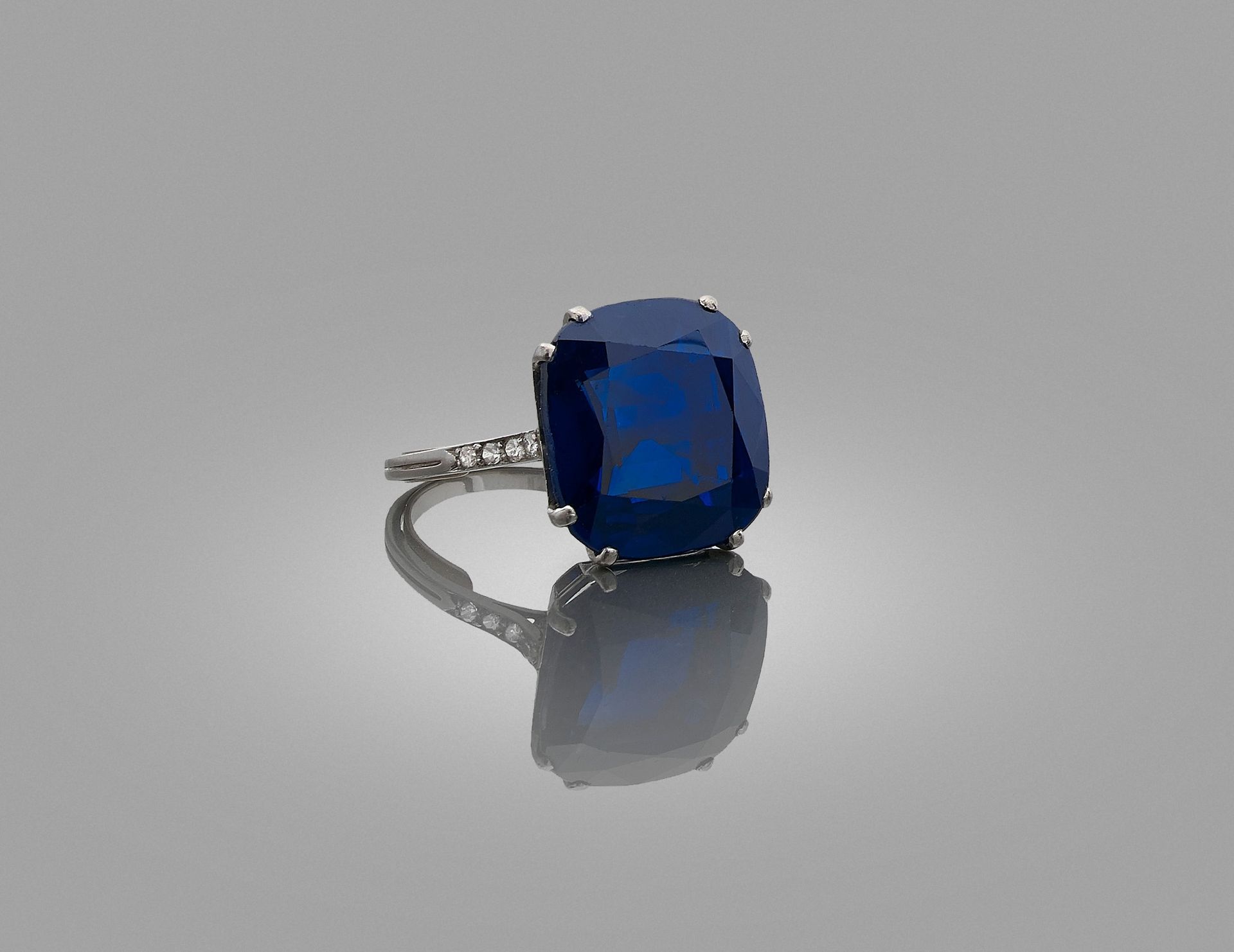Description
Platinum ring set with a cushion-cut sapphire and 8/8-cut diamonds. Signed under the basket Bourdier Paris. Weight of the sapphire: 15.36 carats - Gross weight: 6.74 g - Finger size: 53. Accompanied by two certificates: - A certificate from GEM PARIS dated September 2021 stating: origin Kashmir, no modification or treatment observed. - A certificate from SSEF dated October 2021 indicating: origin Kashmir, no thermal modification observed; and a letter from the SSEF laboratory stating "exceptional sapphire". Kashmir sapphires are known for their brilliance, high saturation and velvet-like appearance. The majority of the world's finest and most valuable sapphires have been mined from this region of the Himalayas. The history of Kashmir began in 1881, when the inhabitants of the Zaskar Mountains at an altitude of 6,000 metres, on the border of Kashmir and India, began to exchange sapphire crystals for salt, weight for weight. In 1883, the maharajah of Kashmir declared himself the owner of the mines and stopped all private sales. Since then, it is the army that guards the deposit. The reputation of Kashmir sapphire rests almost entirely on the stones extracted between 1881 and 1887. Thereafter, very few sapphires are produced.
22
Platinum ring set with a cushion-cut sapphire and 8/8-cut diamonds. Signed under the basket Bourdier Paris. Weight of the sapphire: 15.36 carats - Gross weight: 6.74 g - Finger size: 53. Accompanied by two certificates: - A certificate from GEM PARIS dated September 2021 stating: origin Kashmir, no modification or treatment observed. - A certificate from SSEF dated October 2021 indicating: origin Kashmir, no thermal modification observed; and a letter from the SSEF laboratory stating "exceptional sapphire". Kashmir sapphires are known for their brilliance, high saturation and velvet-like appearance. The majority of the world's finest and most valuable sapphires have been mined from this region of the Himalayas. The history of Kashmir began in 1881, when the inhabitants of the Zaskar Mountains at an altitude of 6,000 metres, on the border of Kashmir and India, began to exchange sapphire crystals for salt, weight for weight. In 1883, the maharajah of Kashmir declared himself the owner of the mines and stopped all private sales. Since then, it is the army that guards the deposit. The reputation of Kashmir sapphire rests almost entirely on the stones extracted between 1881 and 1887. Thereafter, very few sapphires are produced.
